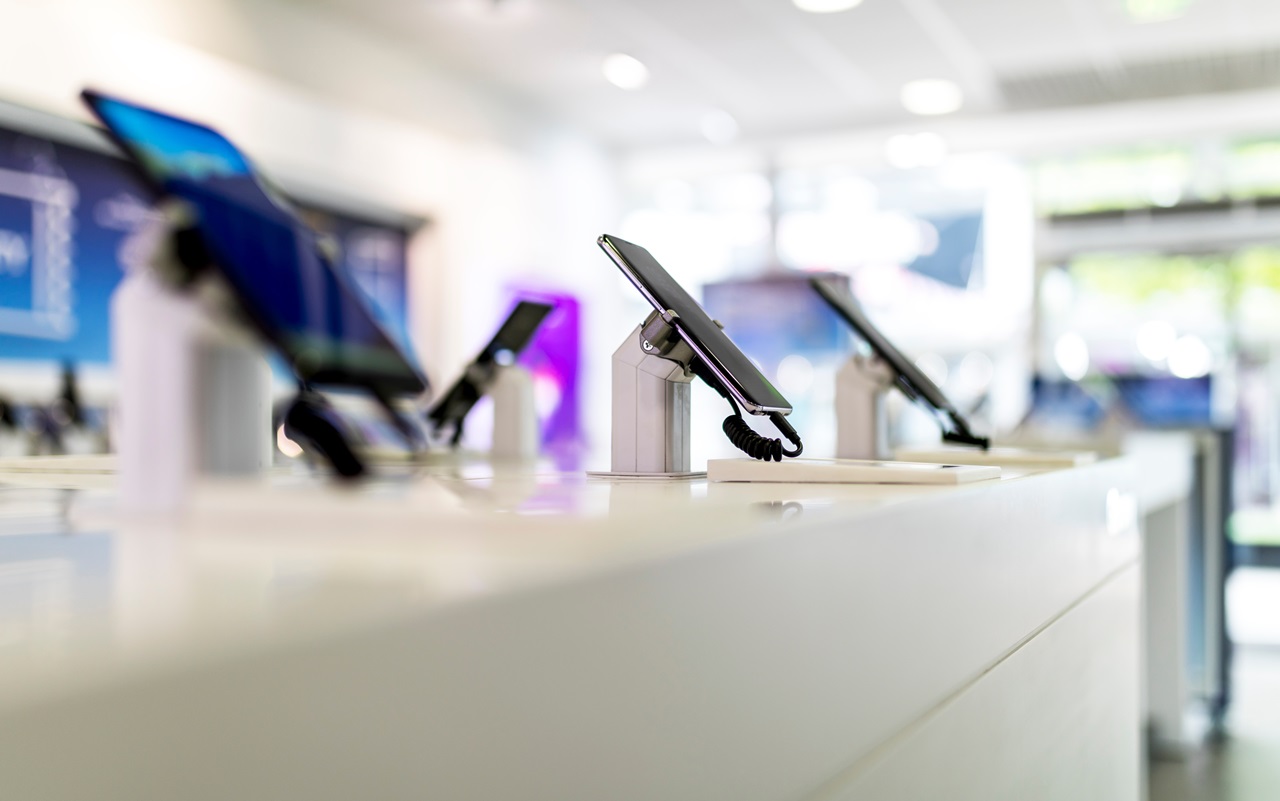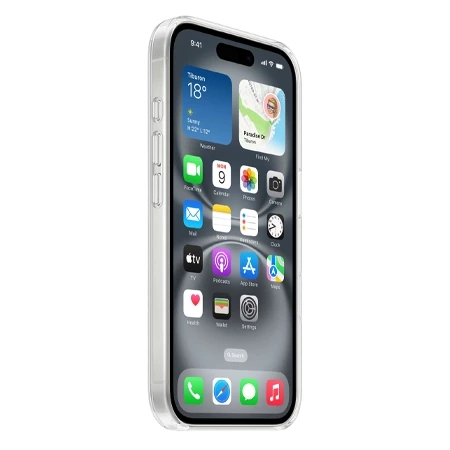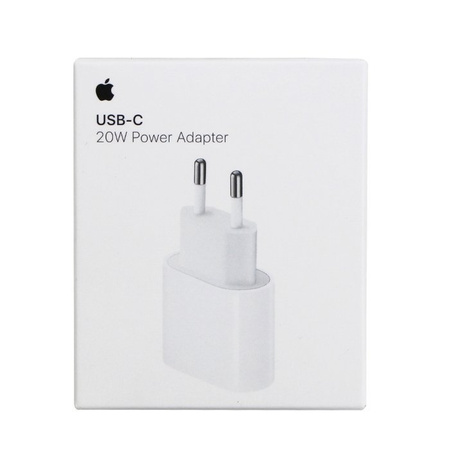iPhone 15 vs iPhone 16 - model comparison, differences and what to choose?

Design and construction
One of the key aspects Apple uses to attract customers is design. The two models - iPhone 15 and iPhone 16 - show only a slight evolution of what Apple has introduced in previous years.
The phone has a modern, elegant design. The housing is made of aluminum, which provides greater resistance to damage, as well as lightweight. Interestingly, the iPhone 15 Pro and Pro Max models have a titanium frame. With the iPhone 16, we have no revolution in terms of design and performance. Aluminum construction, tinted glass, same shape and dimension, and almost identical weight (the difference is 1g). There's also the same-looking Dynamic Island interactive field. We also have a layer of Ceramic Shield, although on the newer model it is next-generation Ceramic Shield. This patch provides even better protection against drops and scratches, increasing the overall durability of the device, although naturally the older model is also quite solidly protected.
Basically, the only differences between the models are the color scheme and the slightly different arrangement of the lenses - on the iPhone 15 they are arranged diagonally, while on the iPhone 16 they are arranged vertically, one below the other. This new chip not only offers improved aesthetics but also enhances spatial video capture capabilities. The button configuration has also changed slightly. Invariably, we have a volume control button and a lock button, but in the iPhone 16 the ring mode button has been replaced by the action button already familiar from the Pro series, and a Camera Control button has been added to the mix.
The Action button allows you to program an action of your choice, such as starting a voice recorder or translator, while the Camera Control button allows you to quickly start the camera and smoothly configure the parameters for photos or video.
Color variants of iPhone 15 are pink, yellow, green, blue and black, and for iPhone 16 - ultramarine, beryl green, pink, white and also black. In the second model, the tinted glass comes in slightly more saturated shades, and we liked the ultramarine the best.
Display
IPhone screens always attract attention with their quality, and Apple is constantly working to improve them. Both models offer 6.1" Super Retina XDR OLED displays with a resolution of 2556 by 1179 pixels, giving 460 pixels per inch. The display in both cases is protected by a Ceramic Shield layer. In principle, there is not much difference between the two - both displays offer great color reproduction, deep blacks and high contrast, and their peak brightness of 2,000 nits is more than satisfactory. The phones differ only in their minimum brightness, which can be lowered to as low as 1 nite on the newer iPhone. The shortcoming of both phones, on the other hand, is the 60 Hz screen refresh rate, as this parameter compares poorly with competing smartphones in the same price range.
iPhone 15 a 16 - camera
At first glance, the iPhone 15 and 16 are also no different in terms of photographic capabilities. The former is equipped with a set of cameras, of which the main camera has a resolution of 48 MP and the ultra-wide-angle camera has 12 MP. The second has an advanced camera system based on a 48 MP Fusion main camera and a 12 MP ultra-wide-angle camera. Each allows users to take ultra-high-resolution photos, and also gives them the ability to record Dolby Vision videos up to 4K at 60 fps./s. The cameras also have improved portraits with point and depth-of-field controls. What makes them different then?
First, the iPhone 16 allows you to take spatial and macro photos with the help of an ultra-wide-angle lens, which were unavailable on the older model. In addition, this lens is able to capture much more light, thanks to its brighter aperture, which provides much better quality photos, which is important if you are shooting in different lighting conditions.
The new model also features new photographic styles and the ability to adjust tone and color. The revised styles can be used both during shooting and after saving the file. In terms of software innovations, we also have the ability to modify the sound of voice in videos, reduce wind noise and record surround sound, even after saving the file.
Of course, taking pictures is supported by the aforementioned new Camera Control button, which allows you to conveniently trigger the shutter button, set focus and exposure, control e.g. zoom, filters, switch between lenses, record videos, and minimize the interface.
Performance
When we talk about performance, Apple has no equal. Each generation of iPhones gets a new and improved processor for smooth operation and even better performance and power savings. This time is no different.
iPhone 15 runs on A16 Bionic processor. It is a 6-core chip with 2 performance cores and 4 power-saving cores, offering great performance and optimized power consumption. Compared to older processors, the A16 provides faster processing, better graphics performance and greater efficiency in artificial intelligence-based computing tasks. In the iPhone 16 we have the A18 chip, whose specifications are admittedly the same, but Apple says the new CPU is 30% faster and the GPU is up to 40% faster, with the Neural Engine being 17% more efficient. Compared to the iPhone 15, the amount of built-in RAM has also increased and is now 8GB.
Memory management and storage options
In terms of storage options, the iPhone 15 and iPhone 16 offer similar variants, but differences may arise in operating memory management. The iPhone 16 has 8GB of RAM, an improvement over the 6GB in the iPhone 15. Larger RAM allows more efficient management of multiple tasks simultaneously, resulting in smoother performance of applications, especially more demanding ones, such as video editors and 3D games. For the basic versions of internal storage, both models offer options ranging from 128GB to 512GB, which is sufficient for most users, but for those who need even more space, Apple is introducing a 1TB option, available only on Pro models.
Better support for games and multimedia
For gaming and multimedia enthusiasts, the iPhone 16 may prove to be a more attractive choice than its predecessor. With a new A18 processor and 40% faster graphics processor, the new model offers better support for advanced 3D games and more demanding graphics applications. the iPhone 16 also supports ray tracing technology, which improves the realism of lighting and shadows in games, a significant difference from the iPhone 15. For those who appreciate premium entertainment, the iPhone 16 also provides more advanced surround sound support, which is ideal for movies and music.
Battery and charging
Battery performance and charging speed are key elements that smartphone users pay attention to. Often it is the battery that determines whether the phone will last a full day of intensive work.
In the iPhone 16 we have a battery with a slightly larger capacity than its predecessor (3349 mAh vs. 3561 mAh) and a claimed higher energy efficiency, which the manufacturer promises provides two hours more runtime while playing video and streaming video. So, despite a really minimal change in battery capacity, we can get a few more hours of operation on a single charge thanks to an energy-efficient processor. Instead, the charging parameters have not changed. Both phones support wired charging and wireless charging (with MagSafe chargers and chargers that support the Qi standard). As for fast charging, a 20W power adapter will charge the battery to 50% in 30 minutes.
Connectivity and wireless technologies
In terms of connectivity, the iPhone 16 makes significant improvements over the iPhone 15. The new model supports Wi-Fi 7, which offers much faster data speeds and better connection stability compared to Wi-Fi 6 on the older model. With Wi-Fi 7, iPhone 16 users can enjoy a smoother Internet experience, especially when streaming high-definition videos or playing online games. Also new in the iPhone 16 is support for Thread network technology, which facilitates integration with smart home devices, providing faster and reliable communication between devices. These features can be an important consideration for those who use advanced smart home solutions.
Security and privacy features
Apple has always attached great importance to security, so both the iPhone 15 and iPhone 16 offer extensive options for protecting user data. Both models feature Face ID technology, which allows you to securely unlock your phone and authorize payments. In addition, Apple makes sure that all user data is protected with encryption.
Apple Intelligence
It is worth noting that the iPhone 16, unlike its predecessor, is tuned to support Apple Intelligence features. Sounds great only that this long-awaited feature is still not available in Poland. I mean it is, as of recently, but only for Macs with the M1 chip and newer. Meanwhile, in the context of iPhones, this is a melody of the future for now. Apple has admittedly announced that new artificial intelligence features will be made available in the European Union in 2025, but we'll have to wait at least a few more months for that to happen.
Long-term support and future upgrades
When buying a new iPhone, it is also worth paying attention to the prospect of software support and future updates. Both the iPhone 15 and iPhone 16 are guaranteed to support iOS updates for at least several years, ensuring access to the latest features and security fixes. However, as a newer model, the iPhone 16 is likely to receive support for a longer period, which could be an important factor for those planning to use the phone longer. Longer support means that the iPhone 16 will remain technologically current for longer, which translates into better security and access to new features in the future, such as expanded artificial intelligence and Apple Intelligence capabilities, which, as we mentioned, are planned for 2025.
What the iPhone 15 and iPhone 16 have in common?
Both models have the same display size, resolution and screen parameters. The way they are made is no different, based on aluminum construction and tinted glass. However, the application of Dynamic Island is also the same. As befits a flagship iPhone, both have Face ID for unlocking and payment authorization, security features such as SOS alert and accident detection, dual SIM, configurable built-in memory, USB-C 2.0 connector for charging and data transfer, and IP68-rated dust and water resistance, meaning they can withstand submersion up to 6 meters (20 feet) for up to 30 minutes. It is also worth mentioning that the iPhone 15 can be upgraded to iOS 18, so in terms of the operating system's capabilities, functionality and security, there will be no differences in the two cases.
What's the difference between iPhone 15 and iPhone 16?
the iPhone 16 has a newer A18 processor, a better ultra-wide-angle camera, allowing m.in. for macro shooting, an Action button and a Camera Control button and a slightly larger battery, there is also an improved Ceramic Shield layer. Connectivity improvements have also been made, with the introduction of the iPhone 16 Wi-Fi 7 and Thread network technology. We also have, as befits a new generation, new color versions.
iPhone 15 vs iPhone 16 - price
the iPhone 15 128 GB will now be bought for £3499, and the iPhone 16 128 GB - for £3899. Of course, these models with larger memory will be correspondingly more expensive (for iPhone 15 256 GB you will pay extra 500 PLN, and for iPhone 15 512 GB, you will pay extra 1500 PLN, while for iPhone 16 256 GB you will pay extra 600 PLN, and for iPhone 16 512 GB, you will pay extra 1600 PLN), but still the difference between iPhone 15 and iPhone 16 is 400-500 PLN. The difference, therefore, is not much, and while in terms of design and specifications Apple has not made any revolution, the iPhone 16 has offered enough new features that, according to some, it is worth paying extra for the newer device. In our opinion, however, it is not worth it. The new Camera Control button, the macro shooting mode, and which is used only once in a while, or the subtle improvement in technical specifications, which translates into better performance, noticeable, however, mainly in tests, and not in everyday use, are not worth the extra cost of a few hundred zlotys. If we have an appetite for technological novelties, it is probably much better to add a little and invest in the iPhone 6 Pro and iPhone 16 Pro Max models, because there you can really see concrete differences.
iPhone 16 or iPhone 15? Which model to choose?
In our opinion, it is better to choose last year's iPhone 15 than to pay extra for the basic iPhone 16 model, and the money saved is better spent on accessories - protective case, glass tempered, wireless inductive charger, which will improve the comfort of using the phone on a daily basis.
Wanting to allocate a slightly smaller budget for a phone, while not giving up on phones from Apple, you can confidently bet on the iPhone 15. Even more so if one is not interested in macro photography and does not expect to use the spatial photo and spatial video functions, or to use (in the future) Apple Intelligence. Does all this mean that it is not worth paying extra for the newer variant?
Of course not! the iPhone 16 will be a good option for those who want a phone available at an attractive price, which at the same time provides more photo capabilities, more options for photo and video editing, more performance needed for games with improved graphics and ray tracing support, or has an even more damage-resistant screen. This is because the final decision, as always, depends on individual preferences, expectations and needs.
Recommended



